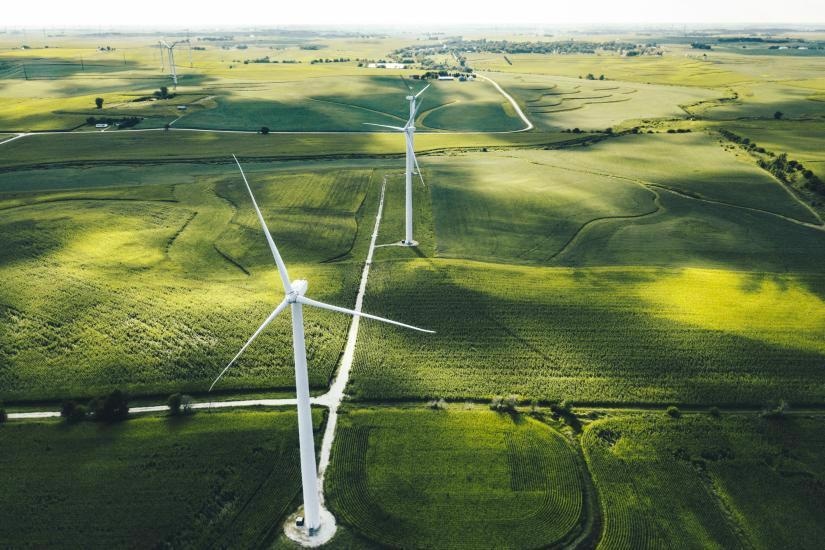The remaining global carbon budget for the 12 main industry and service sectors has been defined by researchers to restrict global warming to 1.5 °C by 2050 and implement the Paris Climate Agreement.
 “Power utilities have the greatest responsibility: they have to provide enough renewable electricity for energy-intensive industries”—Sven Teske. Image Credit: Getty Images.
“Power utilities have the greatest responsibility: they have to provide enough renewable electricity for energy-intensive industries”—Sven Teske. Image Credit: Getty Images.
The new study, performed by the University of Technology Sydney (UTS), offers energy-related carbon budgets, such as tiers of responsibility for greenhouse gas emissions, for the chemical, aluminum, cement, steel, textile, and leather industries; agriculture, power and gas utilities; forestry; the aviation and shipping industry; road transport; and the real estate and building sector.
But it needs urgent climate action by the energy-intensive industries, assisted by the finance sector and backed by dependable and long-term policies from governments.
The UTS researchers feel that the most essential measures to restrict global warming to 1.5 °C are a quick phase-out of coal and internal combustion engines for cars. Electricity suppliers and power utilities have a vital role. They should be able to offer electricity from renewable energies in adequate amounts for electric vehicles and energy-intensive industries.
The study shows that the global carbon budget to restrict global warming to 1.5 °C with 67% certainty is 400 gigatonnes of carbon dioxide (GtCO2) until 2050. The steel sector would have a share of 19 GtCO2 remaining (5.0%), the aluminum industry 6 GtCO2 (1.6%) and the cement industry 9 GtCO2 (2.4%). The biggest carbon budgets are estimated for buildings (climatization and electricity) with 88 GtCO2 (22.6%) and road transport with 82 GtCO2 (21.1%).
It is crucial to have a science-based carbon budget for specific industries to implement climate targets for all parts of these industries. We found that power utilities have by far the greatest responsibility: they have to provide enough renewable electricity for the energy-intensive chemical, steel, cement and aluminum industries and for electric vehicles that no longer need oil.
Sven Teske, Study Lead and Associate Professor, University of Technology Sydney
This new industry-specific emission budget builds on the One Earth Climate Model (OECM), designed by the Institute for Sustainable Futures (ISF) at UTS, for 1.5 °C compatible climate and energy pathways for countries, regions or worldwide.
The One Earth Climate Model’s sector pathway work is important to inform the financial industry for portfolio decision-making as the model is based on a holistic integrated approach. It also shows the granularity that is needed to feed into investors’ analysis. The information details on sector budgets and scope, on interconnections and responsibilities are exceptional.
Günther Thallinger, Chair, UN-convened Net-Zero Asset Owner Alliance
As a first significant use case sending a powerful signal to the COP negotiations, the Net-Zero Asset Owner Alliance is assisting the additional development of the OECM and employing the new UTS findings and data for notifying the investor team’s net-zero target setting protocol and reporting framework.
The Alliance is an international group consisting of 60 institutional investors dedicated to transitioning their investment portfolios of nearly $US10 trillion to net-zero emissions by 2050 on a low or no overshoot path.
Following are the suggestions of the new UTS study:
- Investing in new oil, coal and gas projects must be stopped
- Guarantee coal phase-out by 2030 in OECD countries; between 2030 and 2040 all regions must phase out coal
- Stop manufacturing passenger cars with oil-fueled internal combustion engines by 2030
- Governments to offer elaborate transition plans to achieve net-zero
- Setting and executing investment, lending and underwriting portfolio decarbonization targets in accordance with 1.5 °C no/low overshoot
- Companies to reveal climate mitigation strategy and its implementation, such as short- and mid-term target setting, target achievements and transparency on engagement activities as well as investments in climate solutions and renewable energies